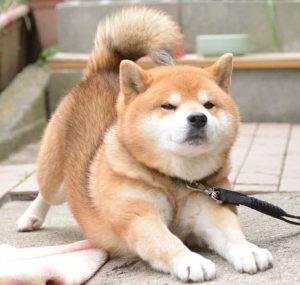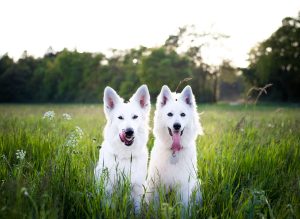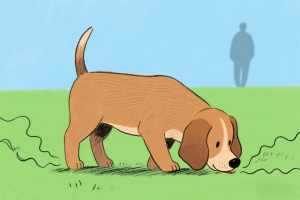For new pet owners, the hardest part is understanding their furry friends’ body language, especially when it comes to dogs. Dogs have a wide range of emotions and can be quite perceptive, using their actions to express affection or seek attention. However, since they can’t speak, they communicate through movements and postures. But what do these actions really mean? Let’s take a look and see if these behaviors resemble those of your own furry companion!
-
Trust and Love
No matter where you go, your dog will want to follow you—whether it’s to the bathroom, the kitchen, or the bedroom. This shows that your dog wants to maintain close contact with you and enjoys the time spent together. The belly is one of the most vulnerable parts of a dog’s body, so if your dog lies down in front of you and exposes its belly, it’s usually a sign of trust. It’s also an invitation for you to play with or pet them.
-
Fear and Anxiety
Dogs may whine or howl frequently, using their vocalizations to vent their fear and “boost their courage.” Some dogs tremble when they’re frightened or anxious, indicating they’ve become so scared that they lose strength and can’t act. Their eyes may also avoid direct contact, showing a reluctance to face what’s scaring them.
-
Confusion
Dogs may stare at something or someone with a focused, puzzled expression when they don’t understand what’s happening. Their eyes might appear deep and concentrated, as though they are trying to comprehend or interpret the situation. In addition, their ears may perk up or rotate slightly to better catch surrounding sounds and information. This body language indicates that the dog is trying to figure out and adapt to its environment.
-
Ready to Fight
When a dog’s eyes become sharp and focused, staring at a potential threat or opponent, it’s preparing for action. Their ears may stand erect to better catch sounds and movements around them. This shows the dog is highly alert to its surroundings, ready to react at any moment. A low growl or snarl might accompany this, signaling the dog’s aggression. Some dogs will also show their teeth or slightly open their mouths to display their sharp teeth and strong bite force.

-
Calm and Focused
When a dog becomes very focused and alert, its eyes will be sharp, locked on a specific target with little to no movement of their gaze. This shows the dog is fully immersed in whatever it’s focusing on, almost ignoring everything else around it. Additionally, the dog’s body posture will be stable, standing or sitting motionless with no unnecessary movements. This stability demonstrates the dog’s focus and self-control.
-
Feeling Nervous
A dog’s nervousness might cause unusual behaviors, such as excessive licking, scratching the ground frequently, or being unable to sit or lie down peacefully. Their body may become stiff, and their back might arch slightly, appearing tense. Their tail may be tucked between their legs or hanging low, with only slight movements.
-
Inviting You to Play
When a dog wags its tail, it’s often a sign of excitement and friendliness. If the tail-wagging becomes more frequent and the motion widens, it could mean the dog is eager to play. The dog may also jump up to show enthusiasm, trying to lick your face or touch your hands. Additionally, a dog may communicate through eye contact, staring at you with bright eyes, signaling that it’s full of energy and ready for fun activities together.
-
Expressing Needs
Dogs communicate their needs through eye contact. For example, they might stare at the food or toy you’re holding, hoping you’ll share it with them. Their posture and body language also convey their desires. For instance, when a dog stands and raises its front paw, it’s often asking for food or seeking affection.
In fact, many of a dog’s actions carry significant meanings. As a pet owner, it’s important to pay close attention and understand these behaviors to better read your dog’s needs and emotions.





